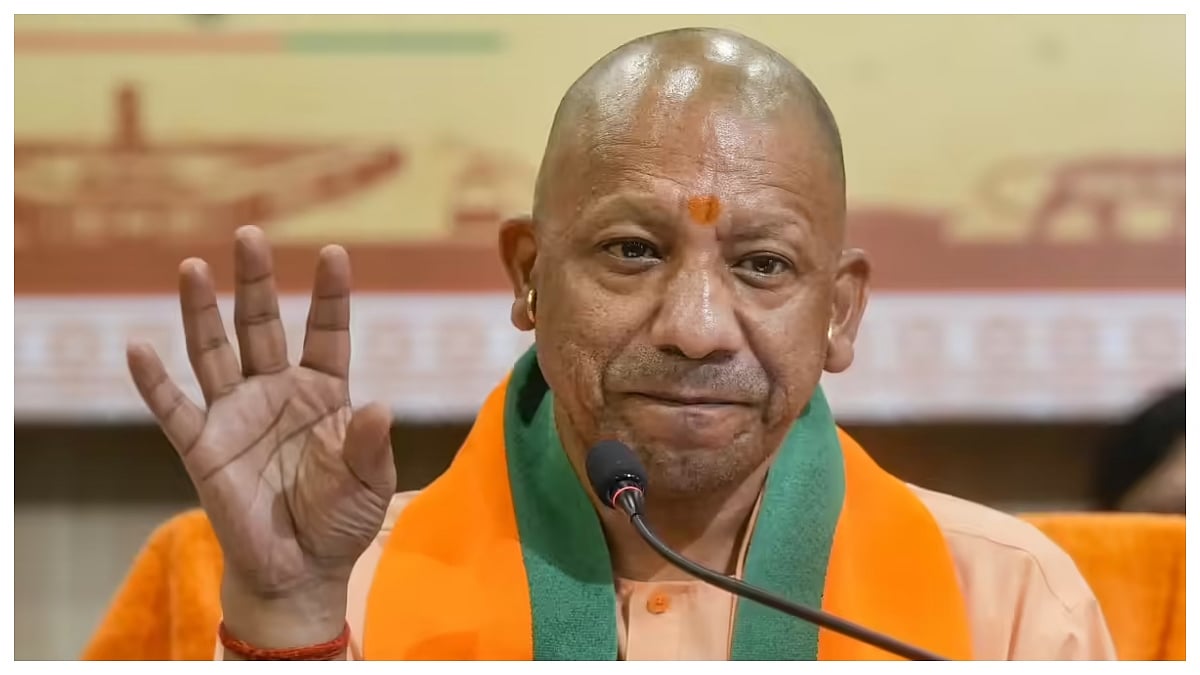The outburst of anger over a controversial jewellery ad centred around interfaith marriage is regrettable and the company's decision to withdraw it is even more so. It behooves the advertising industry to either tread warily and avoid potentially contentious material, or to stand by it.
The ad in question, depicting a Hindu bride in a Muslim family, should ideally have passed unnoticed, as just another mushy and emotionally manipulative bit of footage aimed at glorifying conspicuous consumption. But given the hyper-charged times in which we live, the outburst of anger against it was predictable.
For the few who haven't yet seen the ad: a pregnant young woman in a saree is guided by an older woman in an off-white salwar-kameez to what is obviously a godh bharai ceremony – at the end, we realise she is a Hindu and her loving mother-in-law, a Muslim, has generously organised the celebration for her benefit.
Knowing full well that in the current climate, the most innocuous remark can trigger violent reactions on social media, the company chose to go ahead with the ad. Having done so, it should have stuck to its guns, instead of being spooked by falling share prices. It is possible that the creators of the ad deliberately chose a hot-button issue in order to create a buzz around the ad. If so, they succeeded.
On the one hand, it maintains the content was unexceptionable, on the other, it withdraws the ad. As a result, it has ended up doing more harm than good, in that it has validated reactionary responses of the 'love jihad' variety. The company expressed regret over its “inadvertent stirring of emotions”. There was nothing “inadvertent” about it; merely, they were not the kind of emotions that the advertiser was hoping to stir up.
The advertising industry's opportunistic use of social messaging to sell products is nothing new. As Noam Chomsky famously observed, its “prime task” is to “ensure that uninformed consumers make irrational choices”. The trouble is, stoking emotions comes with the risk of a boomerang effect, because there are many ways of looking at the same thing. It is the ad agency's job to anticipate differing viewpoints and apprise the client accordingly.
For example, a frequently asked question with regard to the jewellery company is why, while batting for inter-faith marriage, did it chose to depict a Hindu bride in a Muslim household? Why not the other way around? Granted, the idea of a mother-in-law adapting herself to the needs of the daughter-in-law carries a high emotional quotient. And when that mother-in-law belongs to another faith altogether, it is guaranteed to leave viewers teary-eyed.
Of course, a Hindu family celebrating Id to accommodate a Muslim daughter-in-law would have accomplished the same thing. But the godh bharai ceremony depicted in the ad (and celebrated in Bollywood cinema) traditionally involves gifts of jewellery, whereas Id doesn't. Needless to say, both the principles in the ad film are dripping gold.
Let's not pretend that the raison d'etre of the ad was anything other than to sell jewellery. It's not as if promoting 'ekatvam' (oneness, ie communal harmony) or breaking stereotypes was its primary objective. Whenever advertising attempts the latter, it's usually to do with a target audience that enjoys purchasing power or influences purchasing decisions. For instance, ads have come a long way from the bun-sporting housewife and often depict strong, self-confident women in high-powered jobs (sometimes supported by men in the kitchen), which is not just recognition but trying to tap into their growing financial clout.
The purpose of advertising is to promote products. In doing so, it may reflect changing social mores, but is rarely ahead of the curve. It is not progressive for the sake of being progressive. The industry was quite comfortable with selling “Fair & Lovely”, until Bollywood actors waged a war against fairness creams.
To flirt with a subject as explosive as 'love jihad' was a bold move. Had the company chosen to rise above its bottomline and refused to pull the ad, it – and the self-righteous ad industry mavens who expressed horror at the 'obscurantist' response - would have been deserving of sympathy. By buckling under pressure, they have arrogated to the social media the right to decide what's acceptable and what's not. What's more, they have given the term 'love jihad', so demeaning to women, another lease of life.
The writer is a senior journalist with 35 years of experience in working with major newspapers and magazines. She is now an independent writer and author.









